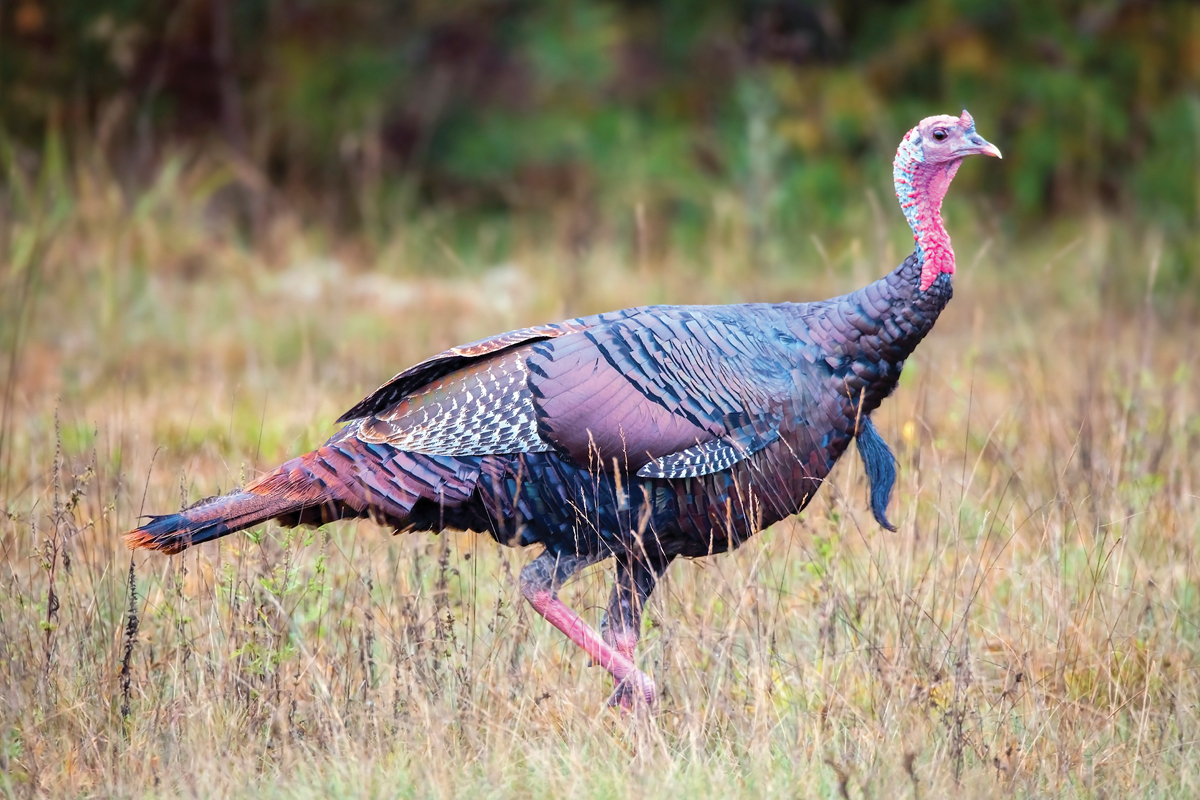Word from the Smokies: What we can learn from wild turkeys
 The male eastern wild turkey has dark plumage with striking bronze, copper and green iridescent colors. Warren Lynn photo
The male eastern wild turkey has dark plumage with striking bronze, copper and green iridescent colors. Warren Lynn photo
If you plan to travel around Western North Carolina or East Tennessee to visit friends or family and eat turkey for the coming Thanksgiving holiday, there is a good chance you’ll spot a few wild turkeys along the way.
Although sometimes we humans may call one another “turkey” as a lighthearted insult, our species can actually learn a lot from the big bird known as Meleagris gallopavo.
Evidence suggests the first turkeys existed as early as 20 million years ago. The modern turkey is related to other game birds like pheasants, quail, grouse and partridges. There are five subspecies of turkey, each differing in plumage and range. Wild turkeys have keen eyesight, are born with innate knowledge of predators and landscape, and are talkative, gregarious animals. They maintain a strong family or “clan” mentality and are superb communicators and collaborators.
“When given the opportunity to study them in graduate school, I realized turkeys were a fascinating species,” said Michael J. Chamberlain, a professor of wildlife ecology with the University of Georgia, who grew up hunting turkeys and now studies their behavior all over the Southeast. “Turkeys communicate in various ways from vocalizations to appearance. It is believed that turkeys primarily recognize each other through these vocalizations and the appearance of their heads.”
Of particular interest to Chamberlain are the social hierarchies that influence how individual turkeys behave throughout their lives. Male and female wild turkeys spend much of the year together in a flock.
“Pecking orders introduce structure into the flocks we observe,” said Chamberlain. “This structure is something we do not fully understand, but it clearly influences how they behave and interact throughout the year.”
Related Items
Both males and females maintain pecking orders in which a dominate bird holds sway over subordinates. These pecking orders begin to form when birds are only a few days old, but they are also fluid and ever-changing.

Both male and female turkeys maintain pecking orders Both male and female turkeys maintain pecking orders in which a dominant bird holds sway over subordinates. Mark Gunn photo
“Turkeys constantly test these pecking orders by fighting, pecking at each other, chasing each other and so forth, seeking to challenge the dominant bird and move up in the hierarchy,” Chamberlain said. “These pecking orders dictate access to resources and breeding opportunities in the spring.”
As spring arrives, males begin their “lek” or group-based breeding rituals. Females will lay an egg each day for 14 days and then incubate the eggs for 28 days until they all have hatched. The young poults are raised by their mother without any fraternal care. The male poults, or jakes, will generally be kicked out of the group the following spring by dominant gobblers.
Wild turkeys were plentiful when European colonists first came to Southern Appalachia. By the early 1900s, however, only a few were left, a decline that continued into the mid-century due to unregulated hunting, rapid deforestation and habitat destruction.
Thankfully, biologists in the 1950s began to capture surviving individuals in various places and relocate them to suitable habitat with the help of an innovative trap known as a rocket net. These relocation efforts continue today, with birds still being moved to areas in the South where populations have not done as well.
“The restoration of this iconic species is considered one of the greatest conservation success stories in the world,” Chamberlain said, “yet turkeys face ongoing challenges that have resulted in population declines in some areas.”
Turkey researchers in Southern Appalachia are focused on ensuring that we have sustainable populations of wild turkeys in the future. Seeming to have a preternatural cognition of their near extinction in the not-so-distant past, the birds exhibit a keen understanding of the constant threat of predators, including humans.
“During spring the males will gobble to announce their presence on the landscape and hens will call or ‘yelp’ to let males know that they are present in an area,” said Ryan Williamson, a wildlife technician with the Great Smoky Mountains National Park. “But they will reduce their spring gobbling to near silence to elude hunting pressure. So, they are aware of the presence of predators and adjust accordingly to survive.”

Keenly aware of the presence of predators, turkeys will reduce their gobbling Keenly aware of the presence of predators, turkeys will reduce their gobbling and move considerable distances to elude hunters. Joye Ardyn Durham photo
It is estimated that more than 500 wild turkeys live in the park, but Williamson says the exact number is unknown.
“The population does appear to be stable and healthy,” he said, “and seems to be growing every year based on the number of surviving poults seen along roadways.”
But over the past several years, Williamson and other park wildlife managers have begun to observe some human conflicts with turkeys.
“In the park, where humans are not a predator of turkeys, we are seeing an increase in the number of animals that are habituated to people and getting easy meals from visitors,” he explained. “Most animals that have been fed by humans appear to lose their natural fear of people and learn to approach them for food, which most humans find threatening. These turkeys can be aggressive towards humans to acquire food, especially during the springtime when they are naturally aggressive towards each other and will fight to establish dominance.”
Wild turkeys thrive in areas with abundant grasses and shrubby vegetation that grows low to the ground. These plants harbor abundant insects and seeds, which dominate turkey diets. The habitats where wild turkeys thrive are also critically important to other species, such as elk and black bears, which share their requirement for hard mast like acorns in the winter. Ultimately, managing parks and forest lands to ensure turkeys can thrive should mean success for many other important species.
(Frances Figart is the editor of “Smokies Life” journal and the creative director for the 29,000-member Great Smoky Mountains Association, an educational nonprofit partner of Great Smoky Mountains National Park. Learn more at smokiesinformation.org and reach the author at This email address is being protected from spambots. You need JavaScript enabled to view it..)
Where are the turkeys ?
In the Smokies, some of the best places for viewing turkeys are in the relatively open fields of Cades Cove, Cataloochee and Oconaluftee, along forest edges and in open woodlands and forest clearings. Early morning is typically an ideal time for birding.
More information about turkeys and other birds in the Smokies is available in the newly revised Birds of the Smokies field guide by Fred J. Alsop III, for sale at any visitor center bookstore in Great Smoky Mountains National Park or online at smokiesinformation.org.









